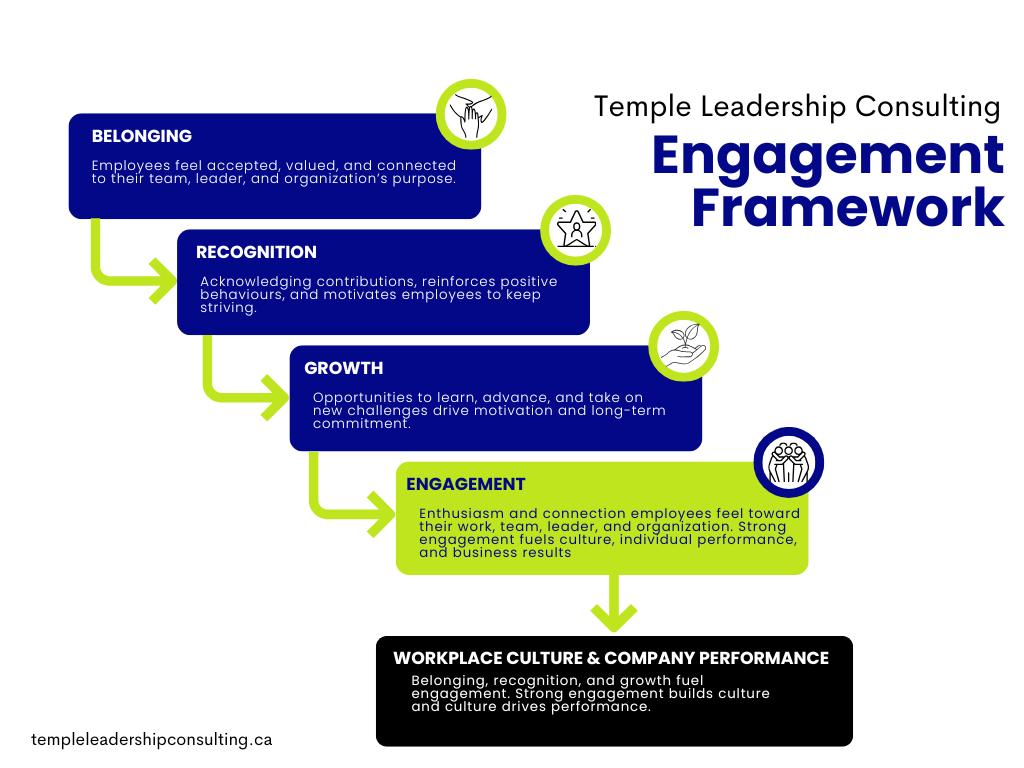Attracting, Retaining & Engaging
Turnover is a costly, and sometimes necessary, line item. Employees are more mobile than ever. And hybrid/remote work has shifted expectations for good.
As I shared in a recent article: “A Second 'New Year' for the Modern Psyche” this time of year is a time for reset. Organizations start recruiting and employees start re-evaluating if they fit in and if their work aligns with their goals. Some reinvest their renewed energy into their current workplace, while others quietly begin looking for new opportunities.
As leaders, we can’t afford to let that momentum turn into disengagement or turnover. Now is the time to act on retention, culture, and motivating teams.
Why Retention Matters
Replacing an employee isn’t just about the $350-$500 to post a job. It’s the lost productivity, recruitment costs, knowledge drain, project slowdowns, and added stress on the team members that stay behind.
Salary.com estimates the cost of replacing an employee can run from 50% to 200% of their salary.
SHRM estimates between six to nine months of salary.
Gallup reports up to 200% of salary for leaders, 80% for professionals, and 40% for frontline workers.
No matter how you calculate it, the costs are high. Investing up front in engagement saves significantly on the back end. But what does investing in engagement look like?
At Temple Leadership Consulting, we use a straightforward framework to help organizations strengthen engagement and culture.
Belonging + Recognition + Growth = Engagement
Belonging: inclusive culture, connection to team, connection to mission
Recognition: appreciation, feedback loops, celebrating wins
Growth: mentorship, career pathways, professional development
We call this our Engagement Framework, it is a practical process for linking people practices to performance.
When leaders lean into these three levers, engagement increases. Engagement drives culture, customer satisfaction, innovation, and financial results. Hey, that sounds an awful lot like a balanced scorecard.
Here’s what this may look like in practice:
Belonging
Inclusive onboarding & 30-60-90 day reviews
Team building sessions to foster trust and connection
Quarterly team meetings with purpose
Revisiting job design & workload balance
Recognition
Tailored recognition systems (formal + informal)
One-on-one check-ins & and informal employee touchpoints
Developing performance management tools that reinforce values
Manager training on giving effective, personalized feedback
Growth
Executive and leadership coaching and 360 feedback coaching
Professional development & mentorship programs
Career path planning and succession planning support
DiSC for personal and leadership growth
Engagement
Stay interviews to understand retention drivers
Engagement and pulse surveys with actionable insights
Exit interviews & alumni feedback loops
Ongoing facilitation to sustain culture and communication
Final Thoughts
Employee retention and engagement aren’t “HR nice-to-haves” and they aren’t only an HR Function. They’re business strategies that directly affect your organization’s resilience. HR is responsible for creating, training, rolling out, and measuring the success of programs, but it takes the whole leadership team participate. Investing in your people practices today determine your organization’s resilience tomorrow. As you prepare for 2026 strategic plans, KPIs, and budgets, ask yourself: Are you investing in programs that build belonging, recognition, and growth?
Ready to improve engagement, retention, and culture?
At Temple Leadership Consulting, we help organizations put retention and engagement strategies into action through facilitation, coaching, and tailored HR programs. We help you measure your current engagement and create action plans for success. Let’s connect to explore how our Engagement Framework can strengthen your culture, improve retention, and drive long-term performance.
Email us at hello@templeleadershipconsulting.com

